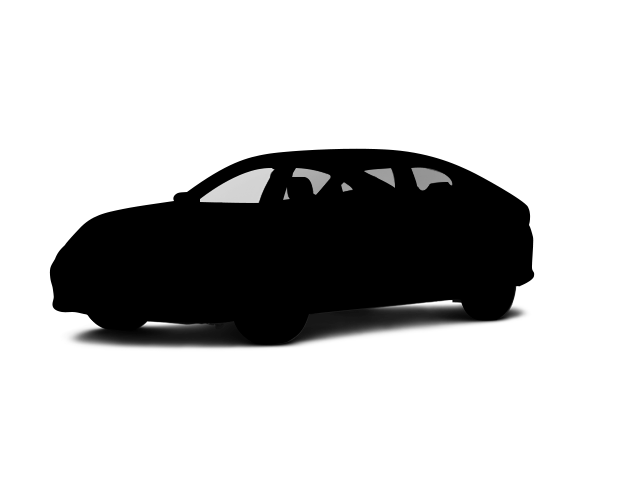Both the Q4 e-tron Sportback and the Sorento Plug-In Hybrid have standard driver and passenger frontal airbags, front and rear side-impact airbags, side-impact head airbags, front seatbelt pretensioners, height adjustable front shoulder belts, four-wheel antilock brakes, all wheel drive, traction control, electronic stability systems to prevent skidding, crash mitigating brakes, daytime running lights, lane departure warning systems, blind spot warning systems, rearview cameras, rear cross-path warning and available around view monitors.
Compare the2022 Audi Q4 e-tron SportbackVS 2022 Kia Sorento Plug-In Hybrid


Safety
Warranty
The Q4 e-tron Sportback’s corrosion warranty is 7 years and unlimited miles longer than the Sorento Plug-In Hybrid’s (12/unlimited vs. 5/100,000).
Reliability
From surveys of all its subscribers, Consumer Reports’ January 2021 Auto Issue reports that Audi vehicles are more reliable than Kia vehicles. Consumer Reports ranks Audi 1 place higher in reliability than Kia.
Engine
The Q4 e-tron Sportback’s electric motors produces 34 more horsepower (295 vs. 261) and 81 lbs.-ft. more torque (339 vs. 258) than the Sorento Plug-In Hybrid’s 1.6 turbo 4-cylinder hybrid.
Fuel Economy and Range
On the EPA test cycle the Q4 50 e-tron Sportback gets better mileage than the Sorento Plug-In Hybrid running on electricity (100 city/89 hwy vs. 83 city/75 hwy MPGe).
On the EPA test cycle the Q4 50 e-tron Sportback gets better mileage than the Sorento Plug-In Hybrid running its gasoline engine (100 city/89 hwy MPGe vs. 35 city/33 hwy).
The Q4 50 e-tron Sportback can travel with zero emissions on a full charge for 241 miles. The Sorento Plug-In Hybrid has to start its internal combustion engine after only 32 miles.
Environmental Friendliness
In its Green Vehicle Guide, the U.S. Environmental Protection Agency (EPA) rates the Audi Q4 e-tron Sportback higher (10 out of 10) than the Kia Sorento Plug-In Hybrid (7). This means the Q4 e-tron Sportback produces up to 11.8 pounds less smog-producing pollutants than the Sorento Plug-In Hybrid every 15,000 miles.
Tires and Wheels
For better traction and acceleration, the Q4 e-tron Sportback has larger rear tires than the Sorento Plug-In Hybrid (255/45R20 vs. 235/55R19).
The Q4 e-tron Sportback’s 235/50R20 front and 255/45R20 rear tires provide better handling because they have a lower 50 series front and 45 series rear profile (height to width ratio) that provides a stiffer sidewall than the Sorento Plug-In Hybrid’s standard 55 series tires.
For better ride, handling and brake cooling the Q4 e-tron Sportback has standard 20-inch wheels. Only 19-inch wheels are available on the Sorento Plug-In Hybrid.
Chassis
The Q4 e-tron Sportback is 8.7 inches shorter than the Sorento Plug-In Hybrid, making the Q4 e-tron Sportback easier to handle, maneuver and park in tight spaces.
Cargo Capacity
The Q4 e-tron Sportback has a much larger cargo volume than the Sorento Plug-In Hybrid with its rear seat up (26.1 vs. 12.6 cubic feet).
Servicing Ease
J.D. Power and Associates surveys of service recipients show that Audi service is better than Kia. J.D. Power ranks Audi 8th in service department satisfaction (above the industry average). With a 31% lower rating, Kia is ranked 26th.
Ergonomics
When different drivers share the Q4 e-tron Sportback, the optional memory seats and mirrors make it convenient. Each setting activates different, customized memories for the driver’s seat position and outside mirror angle. The Sorento Plug-In Hybrid doesn’t offer a memory system.
The Q4 e-tron Sportback offers an optional heads-up display that projects speed in front of the driver’s line of sight, allowing drivers to view information without diverting their eyes from the road. The Sorento Plug-In Hybrid doesn’t offer a heads-up display.
If the windows are left open on the Q4 e-tron Sportback the driver can close them all at the outside door handle or from a distance using the remote. On a hot day the driver can lower the windows from a distance using the keyless remote. The driver of the Sorento Plug-In Hybrid can only operate the windows from inside the vehicle, with the ignition on.
The Q4 e-tron Sportback’s rain-sensitive wipers adjust their speed and turn on and off automatically based on the amount of rainfall on the windshield. This allows the driver to concentrate on driving without constantly adjusting the wipers. The Sorento Plug-In Hybrid’s manually variable intermittent wipers have to be constantly adjusted.
In poor weather, headlights can lose their effectiveness as grime builds up on their lenses. This can reduce visibility without the driver realizing. The Q4 e-tron Sportback Prestige has standard headlight washers to keep headlight output high. The Sorento Plug-In Hybrid doesn’t offer headlight washers.
When the Q4 e-tron Sportback with available tilt-down mirrors is put in reverse, the passenger rearview mirror tilts from its original position. This gives the driver a better view of the curb during parallel parking maneuvers. Shifting out of reverse puts the mirror into its original position. The Sorento Plug-In Hybrid’s mirror doesn’t automatically adjust for backing.
The Q4 e-tron Sportback’s optional rear and side view mirrors have an automatic dimming feature. These mirrors can be set to automatically darken quickly when headlights shine on them, keeping following vehicles from blinding or distracting the driver. The Sorento Plug-In Hybrid offers an automatic rear view mirror, but its side mirrors don’t dim.
The Q4 e-tron Sportback has a standard heated steering wheel to take the chill out of steering on extremely cold winter days before the vehicle heater warms up. A heated steering wheel is only available on the Sorento Plug-In Hybrid Prestige.
The Q4 e-tron Sportback Premium Plus/Prestige’s Park Steering Assist can parallel park or back into a parking spot by itself, with the driver only controlling speed with the brake pedal. The Sorento Plug-In Hybrid doesn’t offer an automated parking system.
